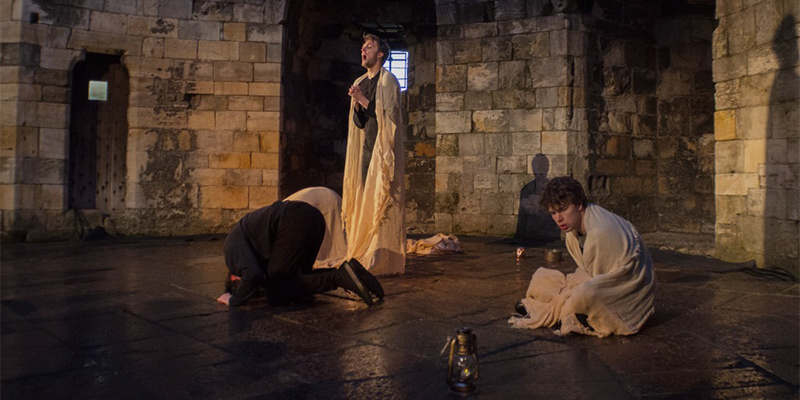Performing the Jewish Archive: Measuring the impact of theatrical performance
-
Case study
- Creativity
- Culture and Communication
Researchers at York are working with arts organisations to bring a remarkable collection of scripts, texts and plays composed by prisoners in a World War II Jewish Ghetto to new international audiences.

The issue
Prisoners in the Terezín/Theresienstadt Ghetto wrote and performed theatrical and musical performances throughout their captivity in the World War II garrison town. The camp was the final stop for over 30,000 Central and Western European Jews mostly from Czechoslovakia, Austria and Germany who perished within its walls. Thousands more were transported to slave-labour and death camps.
The previously unseen cabaret songs, sketches, historical and verse dramas, and puppet plays helped the prisoners endure their imprisonment. The performances were a vehicle for their political convictions and encouraged creative expression of their national and cultural identities.
The research
Scholars feared most of the scripts were lost, but interviews with survivors conducted by Dr Lisa Peschel uncovered forgotten scripts and fragments of narrative which have gone on to be performed to audiences around the world as part of the Performing the Jewish Archive project.
As well as survivor testimonies, Dr Peschel gathered archival documents about the history and cultural life of the ghetto. Her research showed that the theatrical performances were not a form of protest or opposition to the Nazis - rather they were a form of self-expression which enabled the prisoners to create and manage their own narratives in a safe space, offering temporary respite from the deprivations around them. It also allowed the prisoners to remember experiences from their pre-war lives - and imagine what life could be like after the war.
The research also examined the role of humour in the plays and the role of the performances in helping the prisoners deal with trauma.
The outcome
The plays have been performed at six festivals on four continents, plus numerous smaller events.
Dr Peschel’s work has ensured the preservation of the cultural heritage of the ghetto and has provided insights into the role of creativity in people living under oppression. Many of the performances are preserved on video, some of which feature on the project’s website Jewish Music and Theatre.
The work has raised awareness of the theatrical legacy of the ghetto with arts organisations and practitioners opening up opportunities for creative collaborations and interpretations. It has also challenged preconceptions about the prisoners as victims rather than agents who used performance as a vehicle to preserve and enhance their identities in the face of unspeakable cruelty.

Dr Lisa Peschel
Dr Peschel’s research interests include theories of affect, identity and subjectivity, trauma, humour, and the roles that theatrical performance plays for societies in crisis.
